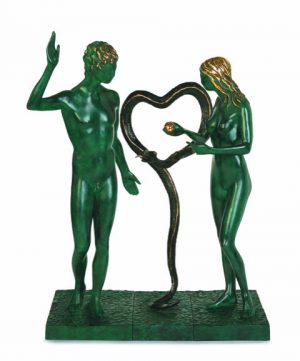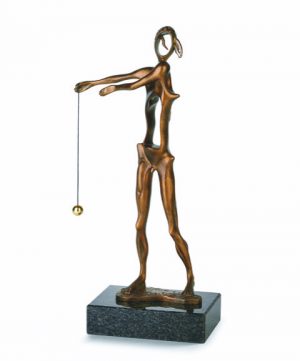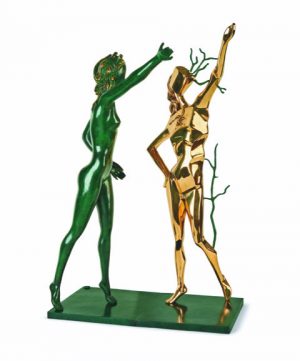ALICE IN WONDERLAND
In 1968 Dalí was commissioned to illustrate an edition of the Alice in Wonderland book. Dalí chose to represent Alice as a girl with a skipping rope, an image which first appeared in his oeuvre in the 1930’s and was used in numerous oil paintings such as Morphological Echo (c.1935).
Like Alice in Wonderland, Dalí travelled a long and arduous road through the land of dreams by means of his artistic expression. He was drawn to both the incredible story line and the extravagant characters in Lewis Carroll’s 1865 tale. Alice was one of Dalí’s favorite characters. In the story, Alice falls asleep and dreams of falling down a rabbit hole into a fantasy world of magic ‘drink-me’ potions, eccentric creatures and absurd realities. For Dalí, she is the eternal girl-child who responds to the confusion of this nonsense world with the naivety and innocence of childhood.
Here, Dalí portrays Alice’s innocence and naivety. Dalí created Alice’s silhouette holding a skipping rope frozen in motion above her head, her hands and hair blossoming into roses, symbolizing feminine beauty and eternal youth. The crutch symbolizes stability, it gives her emotional support, acting as a link back to reality.
Date: conceived in 1977, first cast 1984
Material: bronze
Technique: lost wax process
Edition size: 350 + 35 EA
Height : 90,5 cm
Edition : patina blue
Maquette: original gouache , Alice in Wonderland, 1977
Direct intervention (created by Dalí): the idea, image, and original maquette.
Indirect intervention (created by artisans): lost wax process and patina.






